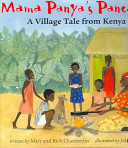
Mama Panya has just enough money to buy ingredients for a few pancakes, so when her son Adika invites all their friends to join them, she is sure there will not be enough to go around. With facts about Kenya and Kiswahilin (Swahili).
Catalog sorted by age group

Mama Panya has just enough money to buy ingredients for a few pancakes, so when her son Adika invites all their friends to join them, she is sure there will not be enough to go around. With facts about Kenya and Kiswahilin (Swahili).
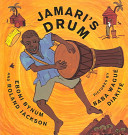
Little Jamari loves the sound of the great village drum and often sits at drummer Baba’s feet. “Why do you play every day?” he asks. “The drum is the keeper of peace in the village,” Baba replies. Time passes and many of the village elders pass on. One day Jamari agrees to take over the beating of the drum, to keep the peace. But little by little, he forgets his promise until disaster looms. What will Jamari do to bring back peace? Featuring acclaimed artist Baba Diakité’s gorgeous illustrations, Jamari’s Drum offers a simple, compelling lesson about duty and the greater good.

In Sydney, Australia, and in Morocco, two boys and their families have a day of shopping. Readers are invited to compare illustrations in two wordless stories that are intended to be read one from left to right and the other from right to left.
See the review at WOW Review, Volume 3, Issue 2
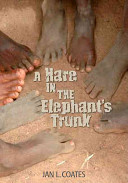
In the little village of Duk Padiet in southern Sudan, a boy named Jacob Deng thrives on the love of his mother, the companionship of his sisters, the excitement of learning how to look after his uncle’s herds of cattle. The year is 1987, and suddenly in the night soldiers from the north invade the village, looting, burning, and killing. The war has arrived, and the life of Jacob will never be the same. This novel is based on the real life experiences of a Sudanese boy who, with thousands of other boys from the region, fled for his life and spent seven years walking through deserts, grasslands and forests, crossing crocodile-infested rivers, surviving life in massive refugee camps. The so-called Lost Boys of Sudan – as they were called by an American aid organization – numbered as many as 27,000, and while many died – from starvation, attacks by wild animals, drowning, or through the brutality of the military – many survived. Jacob never returned to his village, but though he was only seven years old when he had to flee, he somehow managed to live through an almost unimaginable ordeal. Throughout the seven years covered in this story, Jacob resists the temptation to join the liberation army. Steadily Jacob finds himself more and more adhering to his mother’s advice that getting an education is crucial to escaping the cycle of violence that afflicts his country. Jacob’s struggle, then, is to persist in seeking out teachers and eventually a school where his ambition to learn about the world can be met. Through it all he learns about loyalty and love for close friends who have been thrust together with him on this extraordinary journey, and also about the guiding light provided by the memory of his mother.
See the review at WOW Review, Volume 4, Issue 2
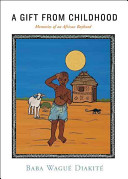
Baba Wagué is only four years old when he is sent to the tiny Malian village of Kassaro to be raised by his paternal grandparents, according to the family tradition. He is most unhappy about this at first, but under his grandmother’s patient and wise tutelage he comes to love his close-knit village community. He learns how to catch a catfish with his bare hands, flees from an army of bees, and mistakes a hungry albino cobra snake for a pink inner tube. Finally, Grandma Sabou decides that Baba is educated enough to go to school, and he moves back to the city, where his family struggles to provide him with a formal education. But he brings his village stories with him, and in the process of sharing them with his neighborhood uncovers his immense artistic and storytelling talents.
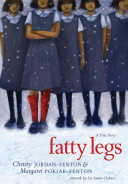
The moving memoir of an Inuit girl who emerges from a residential school with her spirit intact.Eight-year-old Margaret Pokiak has set her sights on learning to read, even though it means leaving her village in the high Arctic. Faced with unceasing pressure, her father finally agrees to let her make the five-day journey to attend school, but he warns Margaret of the terrors of residential schools.At school Margaret soon encounters the Raven, a black-cloaked nun with a hooked nose and bony fingers that resemble claws. She immediately dislikes the strong-willed young Margaret. Intending to humiliate her, the heartless Raven gives gray stockings to all the girls — all except Margaret, who gets red ones. In an instant Margaret is the laughing stock of the entire school.In the face of such cruelty, Margaret refuses to be intimidated and bravely gets rid of the stockings. Although a sympathetic nun stands up for Margaret, in the end it is this brave young girl who gives the Raven a lesson in the power of human dignity.Complemented by archival photos from Margaret Pokiak-Fenton’s collection and striking artwork from Liz Amini-Holmes, this inspiring first-person account of a plucky girl’s determination to confront her tormentor will linger with young readers.
See the review at WOW Review, Volume 4, Issue 2
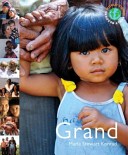
A warm visual essay on the universal relationship between children and their grandparents features photographs from a diverse range of ethnic, cultural and socio-economic regions of the world.
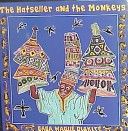
An African version of the familiar story of a man who sets off to sell his hats, only to have them stolen by a treeful of mischievous monkeys.
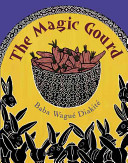
Brother Rabbit and Chameleon teach a greedy king the importance of generosity and friendship.
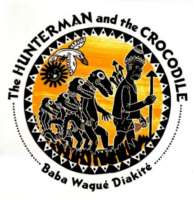
Donso, a West African hunterman, learns the importance of living in harmony with nature and the necessity of placing humans among, not above, all other living things.